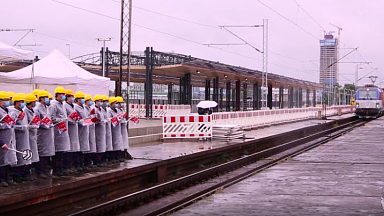Cargotor, which manages the rail infrastructure in the Małaszewicze Reloading Region, is working on the feasibility study of the future project. It is dedicated to the modernisation of tracks and related infrastructure as well as the higher capacity of the intermodal terminal in Małaszewicze. The document will be ready in the fourth quarter of this year. As for the construction works, they will start at the end of 2021 and will last until the end of 2028.
Some details
According to the preliminary evaluations, the modernisation project will increase the handling capacity of the Małaszewicze Reloading Region in four times — from the existing 14 pairs of trains per day to 55 pairs of trains per day (these figures include only the capacity of the broad gauge tracks). The costs are estimated at 3 billion zlotys (around 681 million euros). This money will be allocated from Poland’s state budget and the EU funds.
When the works are completed, the Małaszewicze Reloading Region will have an area of 30 square kilometres. The project also includes some other improvements in rail infrastructure of the transhipment region such as the higher speed of freight trains and higher axle load. More details will be unveiled after finalising the feasibility study.
RailFreight Summit
The transhipment operations in the Małaszewicze Reloading Region is a key concern at the sessions of the RailFreight events. This issue will be again discussed at the RailFreight Summit to take place in the Polish city of Poznań on 1-3 September. The conference programme is available here. For participation in the summit, you can register here.





